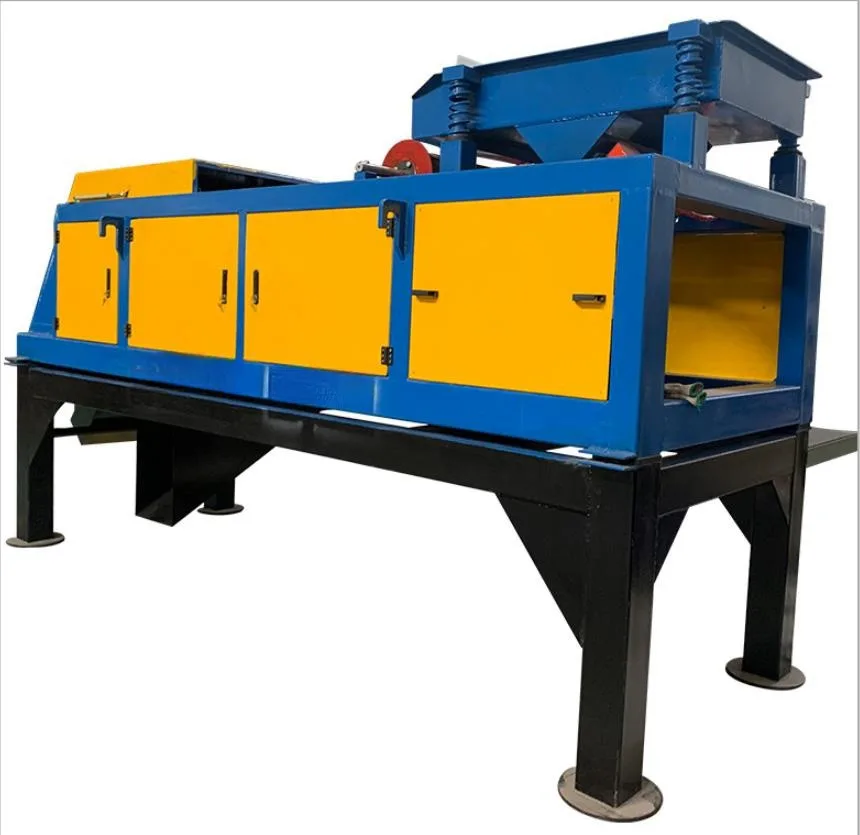
When it comes to separating undesirable materials from a variety show of substances, industries often turn to magnetized and eddy stream separators. These machines are obligatory in recycling, mining, waste management, and many other sectors. While both separators partake the common goal of material separation, they operate supported on different principles and are appropriate to distinct applications. This clause explores the key differences between Permanent Magnetic Separators(PMS) and Eddy Current Separators(ECS), their in operation mechanisms, and the types of materials they are best appropriate for.
Understanding Permanent Mineral Processing Equipment Solutions (PMS)
A Permanent Magnetic Separator uses a attractor to draw i metal metals, such as iron and steel, from a flow of stuff. The core sport of these separators is the use of a permanent wave attracter to make a magnetic sphere. Unlike electromagnets, permanent wave magnets do not need an external great power source to generate the magnetised sphere.
How It Works:
- The stuff flow passes through the magnetized arena generated by the perm attractive feature.
- Ferrous materials are attracted to the attractive feature, while non-ferrous materials are allowed to pass through.
- Once the metallic element material sticks to the attracter, it is distant from the flow, typically via a natural philosophy system like a belt or drum.
Common Applications of PMS:
- Recycling: PMS is widely used in the recycling industry to part ferric materials from mixed run off, including plastics and wallpaper.
- Mining: It is used in the mining industry to split metal metals from rough ore.
- Food Processing: In the food industry, PMS can help transfer metallic element contaminants from bulk food products.
Understanding Eddy Current Separators(ECS)
Eddy Current Separators, on the other hand, work on a altogether different rule. They employ the physics of evoked electric currents to separate non-ferrous metals from a stuff well out. The separator uses a rotating drum with a magnetised orbit to produce an electric car stream in the stuff being refined.
How It Works:
- ECS operates by inducement an electric current in non-ferrous metals like aluminium, copper, and brass as they pass over a rotating magnetic drum.
- The attractable area causes the elicited currents(known as eddy currents) to produce their own magnetized orbit, which repels non-ferrous metals away from the stuff well out.
- Non-metallic materials or ferrous metals are not elocutionary by the eddy current and bear on in the flow, while non-ferrous metals are ejected by the squeeze of the repulsion.
Common Applications of ECS:
- Recycling: ECS is extensively used to part Al and other non-ferrous metals from waste streams such as mixed plastics, electronics, and metals.
- Waste Management: It is unremarkably used in separating aluminium cans, wires, and other non-ferrous materials in gathering and heavy-duty waste recycling.
- Electronics Recycling: ECS is apotheosis for separating worthful non-ferrous metals from physical science run off like boards.
Key Differences Between Permanent Magnetic Separators and Eddy Current Separators
-
Operating Principle:
- PMS operates using a static magnetised area generated by a permanent attractor to draw i metal metals.
- ECS uses a rotating magnetized domain to rush eddy currents in non-ferrous metals, causing them to be repelled away from the material flow.
-
Types of Materials Separated:
- PMS is studied to separate ferric metals like iron and steel.
- ECS is specifically used to part non-ferrous metals like Al, , and memorial tablet.
-
Magnetic Field Source:
- PMS uses a perm attraction, which does not want world power to function.
- ECS uses a rotating drum with a high-frequency alternating stream to give its magnetic sphere.
-
Applications:
- PMS is best proper for industries needing to transfer metal contamination, such as recycling, mining, and food processing.
- ECS is ideal for applications requiring the legal separation of non-ferrous metals, such as aluminium, in recycling, waste direction, and recovery.
-
Energy Efficiency:
- PMS is more vim-efficient as it doesn’t need for generating the magnetic field, qualification it a cost-effective solution for ferric metallic element legal separation.
- ECS requires an physical phenomenon provide to return its rotating magnetised field and thus uses more vitality than PMS.
-
Maintenance:
- PMS in general requires less sustentation due to the simpleness of the perm attractive feature, which doesn't wear out or need power ply.
- ECS requires more upkee, particularly in the rotating components, and its physical phenomenon components can degrade over time.
Choosing the Right Separator: Which One Should You Use?
The decision between a Permanent Magnetic Separator and an Eddy Current Separator largely depends on the type of materials you need to separate and the particular requirements of your surgery.
-
Use a Permanent Magnetic Separator when:
- You need to transfer ferric metals from a material stream.
- You need an vitality-efficient solution for metal material separation.
- Your surgery involves recycling, mining, or food processing.
-
Use an Eddy Current Separator when:
- You need to find non-ferrous metals like aluminum, copper, or plaque.
- Your process involves recycling of mixed metals or run off materials, such as in the municipal solidness waste industry.
- You are encumbered in or aluminum can recycling.
Conclusion
While both Permanent Magnetic Separators and Eddy Current Separators play material roles in stuff separation across various industries, their differences in operative principles, vim use, and stuff handling make them proper for different applications. By understanding their key characteristics and the materials they best wield, industries can choose the extractor that best meets their needs for efficiency, cost-effectiveness, and environmental sustainability.
